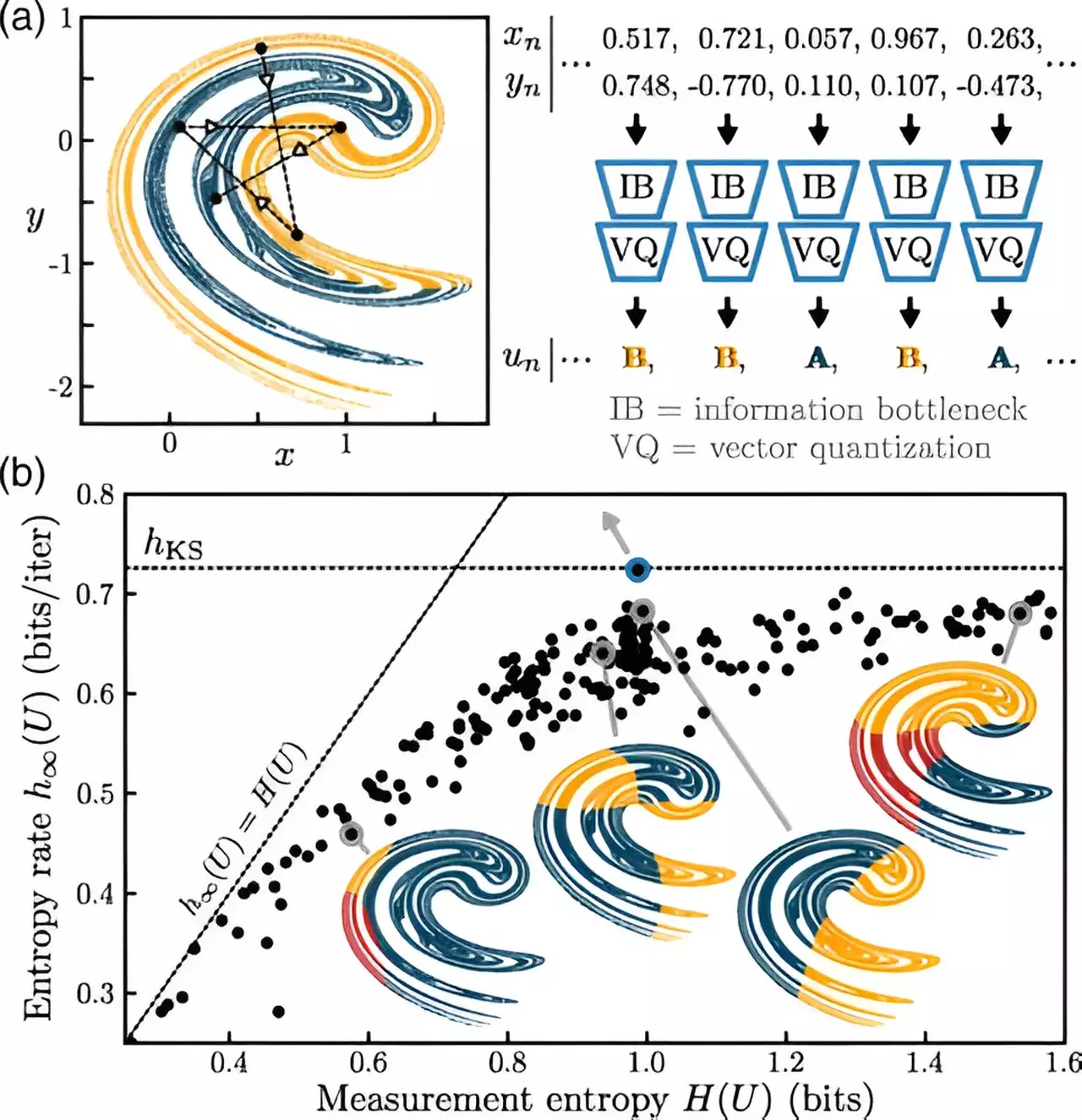Chaos reigns at the heart of many natural phenomena, from weather patterns to ecological shifts. Despite humanity’s relentless pursuit of knowledge, the quest to accurately model chaos remains a formidable challenge. The work of engineers like Dani S. Bassett and postdoctoral researcher Kieran Murphy at Penn has begun to unravel this complex tapestry by employing machine learning to probe the intricacies of chaotic systems. These systems present an alluring puzzle—they exhibit unpredictability over time due to their inherent nonlinear characteristics, rendering traditional prediction techniques far less effective.
Nonlinear systems are characterized by their rich behavior: small changes in initial conditions can lead to vastly different outcomes, akin to a butterfly flapping its wings leading to a tornado weeks later on a different continent. Anyone who has tried to forecast the weather knows that precision becomes elusive as time extends. Murphy articulates this beautifully, likening the transfer of information in chaotic systems to a game of telephone; original messages are often distorted as they pass through multiple channels.
Despite the continuous advancements in modeling, the chaotic nature of these systems imposes a fundamental limit on predictability. Traditional predictive models struggle to maintain accuracy, especially as they project further into the future. The ever-expanding uncertainty is a thorn in the side of meteorologists and researchers alike, as they wield an arsenal of observations yet remain unable to measure every particle influencing the dynamics.
A New Approach: Machine Learning in Action
In their groundbreaking research presented in Physical Review Letters, Murphy and Bassett have sought to bridge this gap by harnessing the capabilities of machine learning. Their method aims to construct a near-perfect measurement of chaotic systems, which could revolutionize not only weather forecasting but also our broader understanding of complex phenomena. Through carefully controlled models devoid of external noise, they are able to validate their machine learning framework before applying these techniques to the messier realities of the real world.
This innovative approach steers away from traditional methods such as Lyapunov exponents—calculations often encumbered by the need for extensive data or detailed understanding of system equations. Instead, Murphy’s machine learning framework can glean patterns and extract essential information with far less input, a game-changer in chaotic systems analysis.
The Essence of Chaos: Distilling Complex Systems
Murphy’s technique epitomizes the potential of deep learning. By distilling chaotic data into a singular measurement, it transcends the limitations of human intuition and incorporates the full breadth of system states across time. This capability holds profound ramifications—whereas scientists have historically approached complex systems in isolation, this framework beckons a more holistic perspective, capturing the dynamic nature of chaos.
The implications for various domains are staggering. Consider medical diagnostics: just as a patient’s myriad tests could be analyzed concurrently to ascertain overall health, Murphy’s work proposes a similar approach to understanding the intricate web of interactions within chaotic systems. Complex systems can no longer be viewed as just a collection of parts but rather as evolving entities with intertwining influences, paving the way for novel interpretations that can drive advancements in health and well-being.
Exploring New Frontiers: From Weather to Mental Health
The ramifications of this research stretch beyond just meteorology; it prompts exploration into human systems as well. Bassett points out that the dynamics of chaos can also be applied to understand cognitive processes in the brain—the ultimate chaotic system. Here, the quest to decipher how the brain engenders the mind could unlock new pathways to enhance mental health and cognitive function.
This integrative approach blurs the lines between distinct fields of study, suggesting that the tools developed for understanding chaos could facilitate breakthroughs in medical practice, public health, and beyond. As Murphy and Bassett deepen their exploration, they continue to inspire a shift in perspective towards how we analyze and interpret complex dynamics, fueling optimism for the future.
The Indomitable Human Spirit: Pursuing Certainty in a Chaotic World
Ultimately, humanity’s desire for certainty drives the exploration of chaos. While complete predictability may remain out of reach, the collective efforts of researchers like Bassett and Murphy, grounded in the advancements of machine learning, signify a promising trajectory toward enhanced comprehension and forecasting capabilities. These endeavors not only represent potential advancements in science and technology but also illuminate pathways through which we can address the pressing challenges of our time, offering hope and elevating the quality of life across the globe. As we embrace the dynamism of chaotic systems, we may stand on the brink of transformative revelations that reshape our understanding and navigate the unpredictability of existence.

